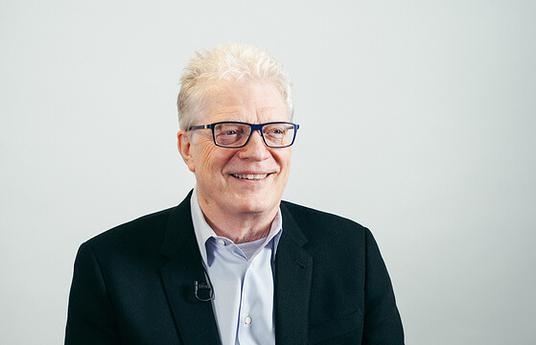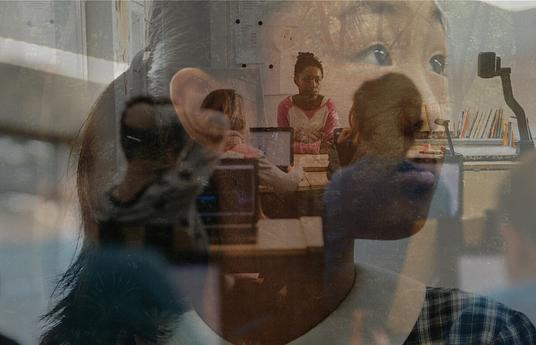Here at HundrED we have an ambitious mission, to create a worldwide education revolution so that every child receives a good education and is prepared to face their future, no matter what the world will look like by then. Easy right? Not quite...
Because none of us want to mess around with children’s education, we think the best way to create the change needed is to find ideas that are already proven to be working in the world and help them to spread. In October 2017 we chose our first 100 Inspiring Innovations of that year and we shared them with the world with step-by-step instructions so that anyone anywhere in the world could implement an innovation that interested them in their own school.
Now we’re on the hunt for this year’s 100 innovations! We welcome anyone to apply, whether you're a teacher, non-profit or huge company, we don't mind – as long as your innovation meets our key criteria of being innovative, impactful and scalable we want to hear about it! Everyone can apply via HundrED Open. As suggested in its name, HundrED Open is the totally open section of our platform where anyone can upload their innovative idea on how to improve education.
We chatted to our Head of Global Research, Jessica Spencer-Keyse, about how to create the perfect submission and what she’s looking for from an application.
The HundrED Open applications are modelled on the innovation pages for the selected 100 from last year, so it pays to do your research, as Jessica told us, ‘Anyone wanting to submit to a part of next year’s HundrED list really should spend some time looking at the innovations we chose in 2017. Firstly, to see what similar innovations we’ve already chosen and why we chose them, and secondly to understand what kind of information we need and how it should be written.’
You don’t need to get caught up in semantics though. We’ll be editing the pages if you’re chosen for next year’s cohort, however it does help to model the information you give on the innovation pages we’ve created. Above all make sure to be really clear about what you’re doing and why you’re doing it.
Thorough research into your pedagogical area will also pay off, you can link out to research papers and articles you’ve read which have informed your work and will help to show us that you really understand and know your area. Not only will it help to prove to us that you know what you’re talking about, but no doubt it’ll strengthen your own idea and practice too!
It’s also best to learn from others’ mistakes, as Jessica told us, ‘People often submit ideas that fulfil some of our criteria but not all of them. For instance, they may have a brand new idea but it isn’t impactful and doesn’t improve education. In order for us to consider it, it has to have made a significant change and improvement from the normal way of educating and fulfil all of our key criteria of being innovative, impactful and scalable.’
In order to convince us it works (and demonstrate to other people) Jessica suggests it’s best to start recording outcomes from the beginning. ‘If you’re just starting out, build in monitoring as soon as possible so you can track it from the beginning. Ideally there would be established publishable work of pre, during & post studies, but you could evaluate your innovation by carrying out a quick survey or interview before, during and after and evaluate your findings to understand impact.’
If you haven’t done this before, Jess recommends looking at other practices, studies and theories for context, then make a list of the intended outcomes of your innovation (for instance, increased motivation or communication skills) and set up an evaluation process. You could also get another teacher or teaching assistant in the classroom to provide feedback or, more importantly, ask students for feedback through surveys and open questions. Evaluation sheets could track their percieved experience, reactions and progress to make sure the innovation is impactful and enjoyable for them too. If you're not used to conducting research in the classroom, it's worth checking out online resources for guidance, especially as others may have conducted a similar small study.
Other people’s endorsement is a particularly great way to make your application stand out. There’s a comment section on our innovation pages which allows for you to include reviews in your application in order to do this. ‘Get people commenting on your innovation. If you don’t know where to start with this you could encourage other teachers in your school to try out your innovation and ask them to leave their feedback as a comment on your innovation’s page,’ suggests Jessica, ‘Though it is best, if possible, to get responses from people you’re not affiliated to to remove bias.’ Reviews are most useful when they give really detailed information, such as where it’s being used, by how many students and the benefits, challenges and drawbacks of the innovation.
It’s not just about what works, but what could work somewhere else. In order for your innovation to be selected, it has to be something other people could do too – and you should be motivated for your idea to spread! ‘We’re specifically looking for things that can spread and scale, so even if things work well locally but it doesn’t help to solve global education needs we can’t choose it. You also have to be committed and to show this commitment to us, so we know you’re willing to get involved and help your idea to spread. Being active online is a really good and easy way of showing that you’re keen to get involved.’
It's worth going the extra mile to include additional materials in your application. In the ‘what does it look like in practice’ section you can add articles, papers, images, videos… anything that backs up your innovation! Jessica told us she wants to be ‘transported to your innovation’ so supplying additional materials can really help. It doesn’t matter how low-grade the materials, you can use photos and videos taken on your phone to show the innovation in practice, after all, a picture speaks a thousand words. (Although do make sure you have the children’s, parent’s or relevant permissions before uploading to our site.)
Being able to really understand the impact and real stories behind your innovation can help for us to understand it. ‘Include a quote from a student or someone who’s witnessed the impact that isn’t yourself,’ says Jessica, ‘and be as human as possible.’ Once you’re happy with your application, ask someone else to read over it to see if they understand it – if they can’t it’s unlikely we will either!
It seems a simple thing to say, but it’s important to fill out the entire application – including the steps! Any application that isn’t fully filled out won’t be researched. You can keep adding to your application – in fact it’s encouraged, we like to be kept up to date with the latest developments – so don’t worry if you forget to include something. For the steps it’s best to keep them as simple as possible so we can really understand how someone else can implement it, try to include one piece of information per step and most innovations should have up to ten steps. Again, looking at our 100 Global List can help to show you how it’s done and finding an innovation that’s similar to yours can be a really useful guide.
If you do get through to interview, you will be sent a short application form to fill in to make sure we have the correct basic information for your innovation. For those innovations that make it through the interview process, they will then be assessed by our expert Academy before final choices are made. Selected innovations are publically announced in October at our Summit event.
You have until June 2018 to fill in your application to be considered for this year’s list. Don’t be put off if you don’t get through this year as we’re always keen to hear from you again. Sometimes it’s just a case of a project being too young and therefore not able to show enough lasting impact or your application just isn’t ready. Either way, everyone is always welcome to reapply.
So get applying! And remember to keep in mind Jessica’s number one advice, ‘Keep it clear, concise, informal and visual.’ Good luck!


